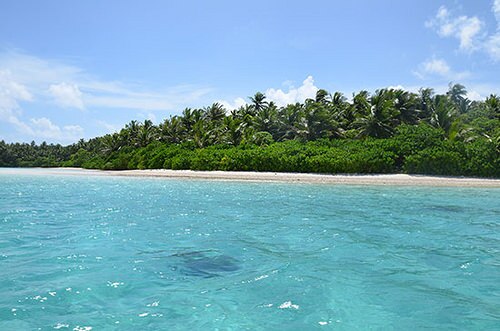
Analyzing seafaring strategies and climate impacts on ocean travel can help researchers reconstruct how humans populated one of the most remote places on Earth, according to a study*. Around 3,400 years ago, humans began crossing the Pacific Ocean to settle Remote Oceania, the far-flung collection of islands that includes Tonga, Samoa, and islands in Micronesia. Although archaeological, linguistic, and genetic evidence delimits the time of arrival of many settlers, the origins of these earliest inhabitants have proven difficult to establish. Alvaro Montenegro and colleagues analyzed ocean routes across the Pacific using computer seafaring simulations primed with high-resolution data for winds, ocean currents, precipitation, and land distribution. Additionally, accounting for the influence of the El Niño Southern Oscillation, the authors constructed “shortest-hop” trajectories to identify the most likely port of departure for the inhabitants of five major regions in Remote Oceania. Among other findings, the analysis suggests that the settlers of western Micronesia originated from a location near the Maluku Islands. The authors also compare their results with a number of previously proposed migration scenarios such as “Slow Boat to the Bismarcks,” “Voyaging Corridor Triple I,” and “Mobile Founding Migrant.” The findings demonstrate the need to incorporate Pacific Islander voyaging strategies and the impact of environmental variables on ocean travel into the analysis of colonization in Remote Oceania, according to the authors.
_____________________________________
View of Kahlap islet, Mwoakilloa atoll, Eastern Caroline Islands, Micronesia. Image courtesy of Aaron S. Poteate (North Carolina Museum of Natural Sciences, Raleigh, NC)
_________________________________________________
Shell adze from Mwoakilloa atoll, Eastern Caroline Islands, Micronesia. Image courtesy of Aaron S. Poteate (North Carolina Museum of Natural Sciences, Raleigh, NC)
__________________________________________________
Source: PNAS press release
__________________________________________________
*“Using seafaring simulations and shortest-hop trajectories to model the prehistoric colonization of Remote Oceania” by Alvaro Montenegro, Richard Callaghan, and Scott M. Fitzpatrick.
__________________________________________________

______________________________________________
Travel and learn with Far Horizons.
____________________________________________
This richly illustrated issue includes the following stories: Recent findings shedding new light on the whereabouts of the remains of Philip of Macedon, father of Alexander the Great; how an archaeologist-sculptor is bringing bones of the dead back to life; archaeologists uncovering town life at the dawn of civilization; an exclusive interview with internationally acclaimed archaeologist James M. Adovasio about what makes the Meadowcroft Rockshelter prominent in the ongoing search for the first Americans; what archaeologists are finding at the site of the ancient city of Gath, the home town of the biblical Philistine giant, Goliath; and how scientists are redrawing the picture of human evolution in Europe. Find it on Amazon.com.








